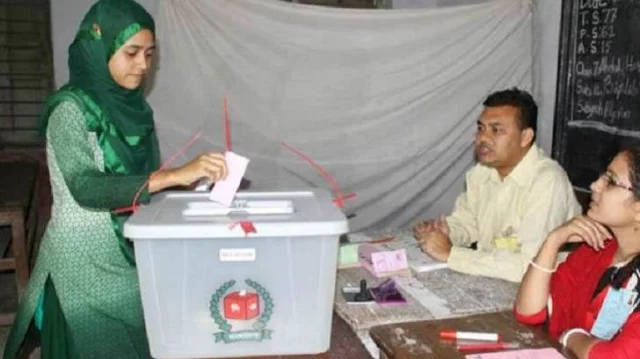We have a basic stock trading course, swing trading course, 2 day trading courses, 2 options courses, 2 candlesticks courses, and broker courses to help you get started. It’s a smaller reversal candle, and the success of the pattern depends on the strength of the bullish pattern after the reversal. Candlestick patterns should not be the sole basis for trading decisions, and it is always prudent to conduct a thorough analysis and risk management procedure before entering any trades.
A dragonfly doji is a unique candlestick pattern that signals potential trend reversals. It consists of a candle with a long lower wick and a small real body at or near the top of the candle’s range. The long lower shadow shows sellers initially drove prices down, but intensive buying then brought the close back up near the open.
When a dragon fly doji has formed in a downtrend it is regarded as a strong signal due to the swift change of power from the sellers to the buyers. When it forms, and the circumstances are right, it’s useful, especially if you use it alongside other trading indicators. The pattern doesn’t form frequently, but when it does, traders interpret it as a clear warning sign. Using multiple indicators in conjunction with one another is far more beneficial. The Dragonfly Doji and Gravestone Doji form similarly, with a small real body near one end of the candlestick and a long shadow on the opposite side. The differentiation is based on whether the small real body is located near the trading period’s low or high.
A doji is a name for a session in which the candlestick for a security has an open and close that are virtually equal and are often components in patterns. Doji candlesticks tend to look like a cross, inverted cross, or plus sign. Although some traders may try to fade the retest of the pattern’s high or low, the most reliable way to trade the high-legged doji is by using a breakout strategy. The price decline paused for a while, and the attempted rally hit the indicator and formed a gravestone doji. A setup that occurs at any of the important retracement levels may lead to a price reversal. If you pick a good setup that occurs after a pullback to a resistance level, you can potentially ride the next impulse wave down, and this increases the chances of a great outcome.
- On the other hand, if it forms at a resistance level during a rally in a downtrend, it can have a bearish reversal effect.
- Eventually, the trader observes that upside momentum is waning, so they exit their long position at a profit.
- The dragonfly doji has a long lower wick or shadow and a small real body at the top of the candlestick, near the opening price.
- So, there was a confluence of two supporting factors where the setup formed.
When trading the dragonfly doji pattern in an uptrend, apply your trend line across the rising swing lows and look for the pattern whenever the price pulls back to the line. When the gravestone doji forms at the end of a price rally, it could act as a bearish pin bar reversal pattern, but when it occurs after a downswing, it doesn’t mean much. The gravestone doji has a long upper wick, little or no lower wick, and no real body — which implies that the session’s open, close, and low prices are at the same level. Traders would also take a look at other technical indicators to confirm a potential breakdown, such as the relative strength index (RSI) or the moving average convergence/divergence (MACD). This pattern is great for day trading a bearish bounce into one of the best swing trading candlestick patterns.
Other Doji Variations
The creation of the doji pattern illustrates why the doji represents such indecision. After the open, bulls push prices higher only for prices to be rejected and pushed lower by the bears. However, bears are unable to keep prices lower, and bulls then push prices back to the opening price. Now that we know how dragonfly doji to identify one of the most straightforward candlestick patterns, let’s learn how to trade it. It’s a unique chart pattern and demonstrates a significant swing in momentum to the upside which is perfect for swing trading. This information can be golden if you are a swing trader, or looking to exit a position.
What is a Hammer Candlestick Pattern?
It indicates growing downside momentum that could foreshadow a shift from a bullish to a bearish trend. After a prolonged downtrend, however, this candlestick pattern becomes a positive reversal signal. The buying pressure reveals the possible exhaustion of the preceding selloff. When interpreting doji candlestick patterns, it is essential to consider the position of the doji candlestick pattern about previous market action. For example, if the doji candlestick pattern occurs close to the bottom of a price downtrend, it may be interpreted as a bearish pattern.
Dragonfly Doji Bearish Candlestick Continuation Trade Setup
A Dragonfly Doji is a type of single Japanese candlestick pattern formed when the high, open, and close prices are the same. Doji candlesticks should be used with other indicators to signal a possible price reversal. To explore how the dragonfly doji can be used in practice, consider a hypothetical trading scenario of a currency pair like EUR/USD that is engaged in a sustained downtrend. This market action reflects the unyielding presence and dominance of bears in the forex market. The tug-of-war between bulls and bears that underlies the psychology of the dragonfly doji lays the groundwork for potential trend shifts in either direction. The dragonfly doji is used to identify possible reversals and occurs when the open and closing print of a stock’s day range is nearly identical.
The dragonfly doji is a candlestick pattern that indicates price action indecision that could lead to a potential reversal. However, Dragonflies appearing in downtrends can also show potential reversal signals although these are less than those seen during uptrends. Dragonflies during downtrends will often be red and show as a warning sign of an impending trend change which can lead to strong bearish price action. The dragonfly doji is a candlestick pattern that is formed when the high, open and close prices are equal, or very similar, whilst there is a long wick that has created a session low. The other types are the long-legged doji, standard doji, and gravestone doji.
The most important part of the https://g-markets.net/ is the long lower shadow. The size of the dragonfly coupled with the size of the confirmation candle can sometimes mean the entry point for a trade is a long way from the stop loss location. This means traders will need to find another location for the stop loss, or they may need to forgo the trade since too large of a stop loss may not justify the potential reward of the trade. In addition, the dragonfly doji might appear in the context of a larger chart pattern, such as the end of a head and shoulders pattern. It’s important to look at the whole picture rather than relying on any single candlestick.
This unique candle pattern emerges when the opening and closing prices are virtually identical, creating a long lower shadow. A spinning top bar has a small real body and long upper and lower shadows. The main difference between the dragonfly and the spinning top is that there is little/no upper shadow in the former. A dragonfly indicates a stronger bullish signal than a spinning top, as it suggests a potential trend reversal. Traders should remember that a spinning top may provide both bearish and bullish signals.
What Is the Dragonfly Doji Used for?
While a dragonfly doji pattern can be a reliable indicator, its accuracy improves when combined with other technical indicators and price patterns for confirmation. Some include moving averages, Relative Strength Index (RSI), Fibonacci Retracement Levels, Stochastic Oscillators, and more. The dragonfly doji is a critical tool for traders to decipher market sentiments, especially when evaluating the possibility of a shift from a bearish trend to a bullish signal. Moreover, understanding the nuances of this doji candle amidst other patterns is essential for making informed decisions.
Understanding the Dragonfly Doji
So, there was a confluence of two supporting factors where the setup formed. With a trend line, you may be able to anticipate the levels where the price can reverse in a pullback. In the AUD USD chart below, the price finally broke out of a resistance level and climbed up.
How to Trade the Marubozu Candlestick Pattern
The dragonfly doji, like all the other candlestick patterns, should not be used in isolation. The best approach of using it is to combine it with other technical and price action strategies. For example, you can use indicators like the Average True Range (ATR) and double moving averages. Dragonfly doji candlesticks are reversal candlesticks found at the bottom of downtrends. They are shaped like a T and signal a potential reversal to a new uptrend. The dragonfly doji is a reversal pattern commonly used by chart analysts to identify signs of a potential reversal in the price trend of an asset.
Dragonfly Dojis initially cast long wicks toward the downside, suggesting aggressive selling within the market. However, the price then recovers and closes at the price it opened at; this signals strength within the market. Reversals usually happen when a stock hits support or resistance and does not break.


 মুরাদনগর বার্তা ডেস্ক :
মুরাদনগর বার্তা ডেস্ক : 









